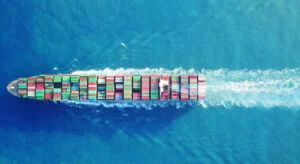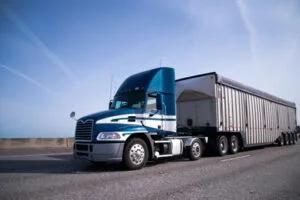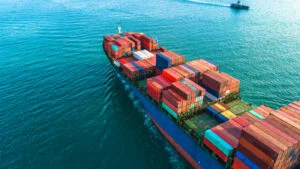There are several types of cargo shipping containers and freight containers to choose from in order to transfer such a large volume of products, each with a different size and storage capacity.
Here is our guide on choosing a shipping container to help you choose the right one for your needs.
Before exporting your products, you must choose the right shipping container. This will ultimately save money on shipping costs.
How do I choose a shipping container?
To pick the right shipping container, there are five key elements to choose from:
- Container types
- Container sizes
- Container specs
- container conditions
- Budget
Types of cargo containers
There are 4 major types of cargo containers to choose from, depending on your goods and other factors.
1- Dry Van shipping containers
They are the most popular option. They have a sturdy structure and may be stacked up to 8 high.
Containers for general or dry freight are made of aluminum or steel.
Dimension (2.40m width) (2.60m in height)
Hight (6 meters or 12 meters).
How much do dry van shipping containers cost?
It varies depending on which type of dry van containers you use (Open top container, high container, width, height)
Overall this type of container is the most affordable cause it has many different ranges to choose from depending on your budget.
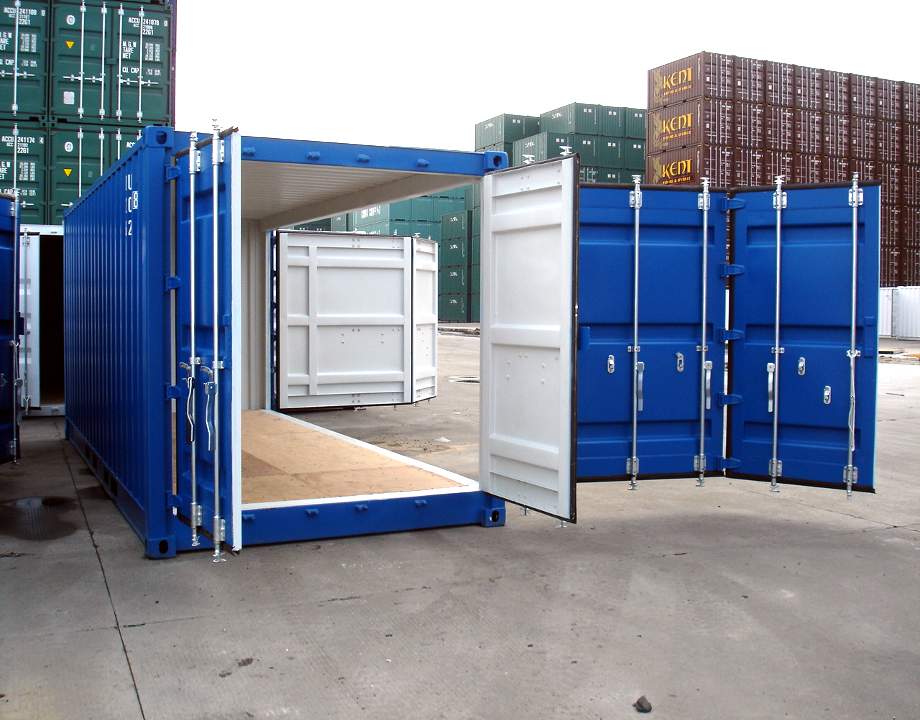
2- Reefer tank shipping containers
Refrigerated containers, also known as Reefer Tanks, are used to transport goods that require refrigeration or freezing, such as fruits and vegetables.
A reefer container is typically offered in three sizes: 3 meters, 6 meters, and 12 meters. The maximum storage area is provided by a 12 meters reefer container, however, a high cube variant provides somewhat more.
A high cube container is approximately 30 cm taller.

How much do Reefer tank shipping containers costs?
The cost of a refrigerated shipping container is determined by a number of factors. Some examples are:
- Container Dimensions.
- The container’s design.
- The container’s condition.
- Container, new or used.
- Seller/Manufacturer.
While it’s difficult to pinpoint a precise cost, here’s an idea of what a typical refrigerated shipping container costs:
| Container type | Average cost (in USD $) |
| 6 Meters refrigerated shipping container (New) | 5,600 and 7,000 |
| 6 Meters refrigerated shipping container (Used) | 3,900 and 4,400 |
| 12 Meters refrigerated shipping container (New) | 10,000 and 12,000 |
| 12 Meters refrigerated shipping container (Used) | 4,600 and 6,300 |
3- FCL shipping containers
This container is excellent if you need to ship a large number of products.
Full container load (FCL) refers to the use of a complete container for a single shipment. This means that the container can be loaded and sealed with security.
When compared to shipping LCL cargo, it is often less expensive to ship cargo in an FCL container (even if it is a partially loaded FCL container).
| Container Type | Interior Dimensions | Cubic Capacity | Max. Pay Load | Images |
| 6 Meters (Dry Cargo) | L: 5.932m W: 2.350m H: 2.410m | 33.6 CBM 1166 Cu Ft | 18600K |
| 12 meters (Dry Cargo) | L: 12.043m W: 2.336m H: 2.379m | 67 CBM 2366 Cu Ft | 27340Kg |
How much do FCL shipping containers cost?
There are different factors that determine FCL cost, such as:
- Labeling and palletization.
- Delivery
- Customs Bonds (U.S)
- Duties and Taxes.
- Demurrage and Detention.
- Port Congestion Surcharge.
Contact us directly to get a quote for your container.
4- LCL shipping containers
For tiny freight volumes, LCL (Less than Container Load) is far more suitable and practical.
The collection of moderate volumes of goods from various shippers until a container is full.
Standard containers range in size from 20′ and 40′ to 40′ high cubes and 45′ containers. The container chosen for the service is determined by the volume of cargo that the consolidator must ship out that week.
To get an idea of how much volume (CBM, which equals cubic meters) is in various FCL containers, consider the following:
- 20′ standard container: 33.2 CBM
- 40′ standard container: 67.5 CBM
- 40′ high cube container: 76.2 CBM
- 45′ high cube container: 86 CBM
How much does LCL shipping containers cost?
The cost of shipping an FCL 20′ container is $2,000.
Your package is only 8 CBM (cubic meters), and you’ve been charged $800. This is significantly less expensive than booking an FCL, such as a 20′ container, for $2,000 per container.
Other factors may also influence pricing, and dense loads weighing more than 1,000 kg per CBM may be priced differently. The weight can be deducted from the per w/m fee.
Contact us directly to get a quote for your container.
5- Flat rack container
A flat rack container has two sides and no top. This allows heavy weights to be placed on the rack from above or from the side. The majority of flat rack containers are either 6 Meters or 12 Meters feet long and made of steel for strength and longevity.
Some flat rack containers are flexible, and some include extra walls that can be connected to the frame.
6- Open top container
This container is similar to a Dry Storage container but does not have a cover. This enables bulk cargo loading. There is a plastic roof structure that can be tied to the container and provides protection from rain and other weather elements.
7. Half height containers
These containers, which are primarily made of steel, are half the height of full-sized containers. Used primarily for products such as coal and stones that require easy loading and unloading.
This type of container is increasingly being used for containerized bulk freight.
8- Special purpose containers
Customized containers can be created in almost any shape or size. They are used to transport objects that require the building of a customized container. Because special purpose containers are expensive to produce and transport, most of this is required for certain loads.
What is the most common shipping container?
Container for dry storage. The most often used shipping containers; come in a variety of ISO-standardized dimensions. They are used to ship dry goods and come in sizes of 6 meters, 12 meters, and 3 meters.
What is the most common size of shipping container?
6, and 12 meters.
Shipping containers and storage containers are available in a variety of sizes. The most typical container lengths (externally) are 6 meters and 12 meters, with a standard width of 2 meters. A container’s height is typically 2 meters. A 5 “and a high cube will have an extra half meter.
Picking the Right Size Shipping Container
Other variables of your purchase, such as condition (new vs. old) and pricing, might be influenced by the size of a container. So, if you’re attempting to figure out how to choose the right container, this is a wonderful place to start.
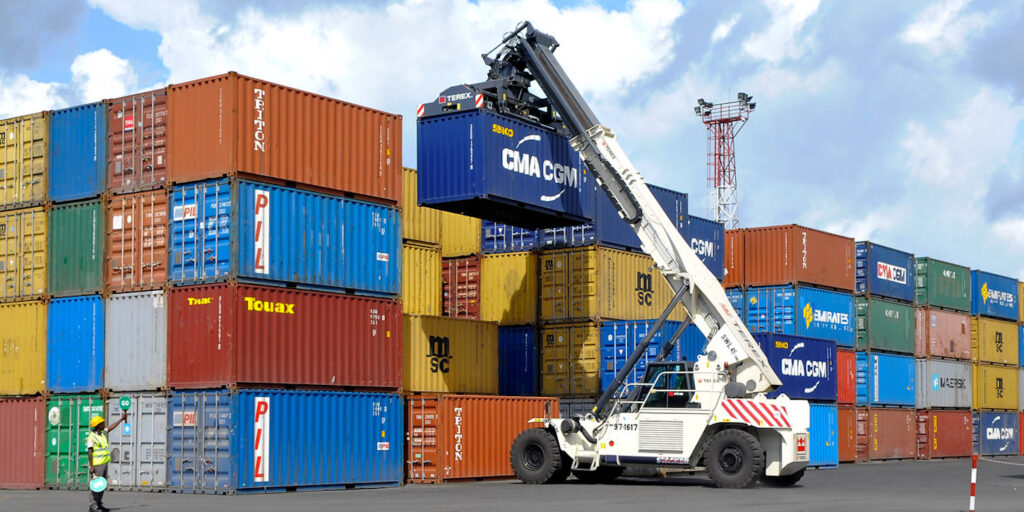
How wide is a standard 40ft shipping container?
A standard 12 Meters shipping container has an internal width of 2.4 Meters, a height of 2.39 Meters, and an internal length of 12.03 Meters.
The 12 Meters container is one of the most popular containers for transporting dry cargo on ships.
The two most common shipping container sizes for purchase are 6 meters and 12 meters. While various sizes are available, such as 3 Meters and 9 Meters containers, they are less common and more difficult to find.
Shipping Containers (6 Meters)
6-meter shipping containers are designed to transport a small amount of heavy cargo, such as machinery, and bulk commodities such as sugar, paper, cement, and steel.
The empty weight of a 6-meters shipping container is 2,350 kg 6 Meter containers have an average loading capacity of 28,129 kg.
The inside volume of a 6 meters container is 33873 Lit. That’s enough to fill 200 regular beds, two compact automobiles, or 9,600 wine bottles.
The dimensions of a 6 meters shipping container are as follows:
External dimensions are 20′ L x 8′ W x 8’6 H.
Internal dimensions: 19’4″ L x 7’8″ W x 7’10” H
7’8″ W x 7’5″ H Door
Shipping Containers 12 Meters
These containers have twice the volume of a 6 meters container but half the weight – its cargo is often bulky but lighter products like cotton, electronics, and consumer furnishings. The empty weight of a 12 Meters shipping container is 3749 kg, with a loading capacity of 28,750 kg (only 2.2 percent more than its 6 Meters equivalent).
The inside volume of a 12 Meters container is 67,535 liters. That’s 400 normal mattresses, four compact automobiles, or 19,200 wine bottles.
The dimensions of a 12 Meters shipping container are as follows:
External dimensions are 40′ L x 8′ W x 8’6 H.
Internal Dimensions: 39’6″ L x 7’8″ W x 7’10” H
7’8″ W x 7’5″ H Door
Need help choosing the right shipping container?
Still unsure about which container is best for your goods? Don’t worry. M AA knows about everything there is to know about shipping containers. We can also provide you with a variety of extra cargo-related services.
Our ocean freight service is available FROM ANYWHERE TO ANYWHERE “GLOBAL REACH” with the best price and estimated time.



